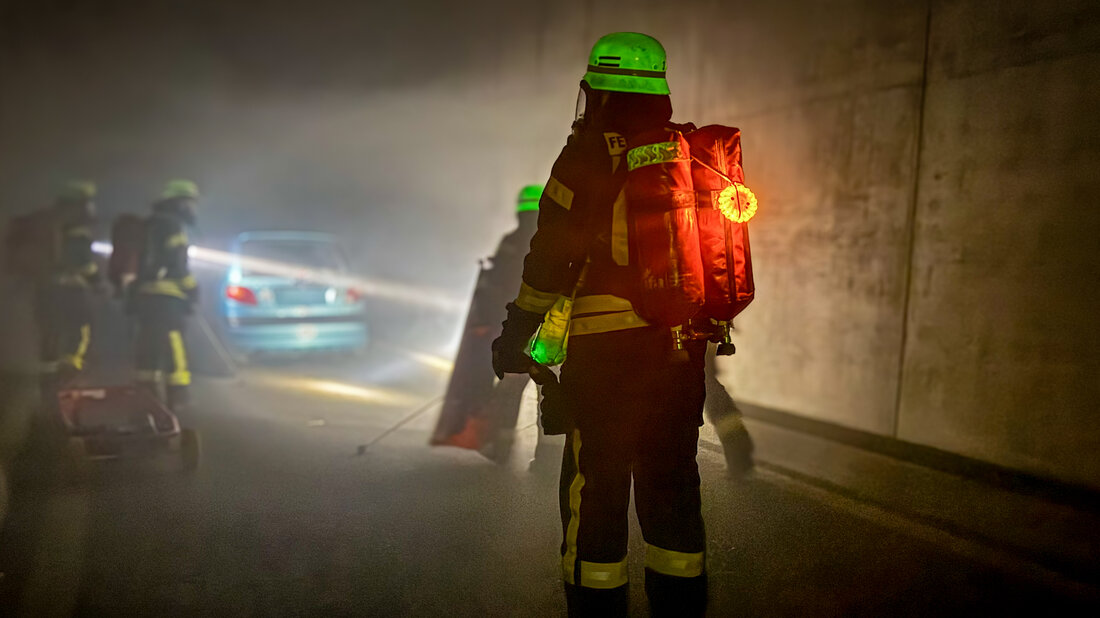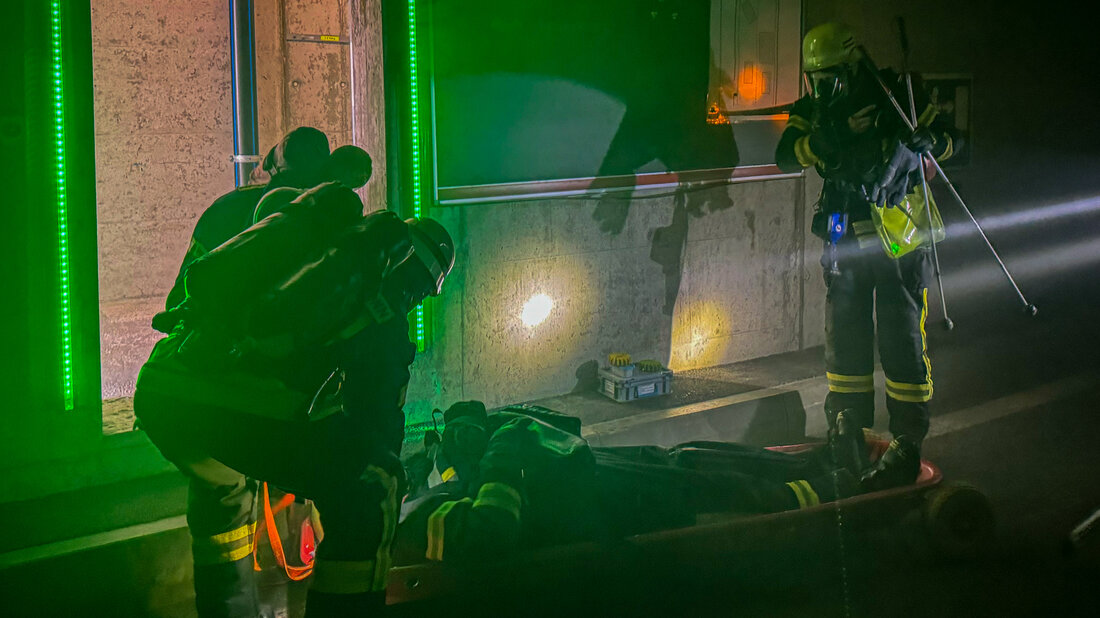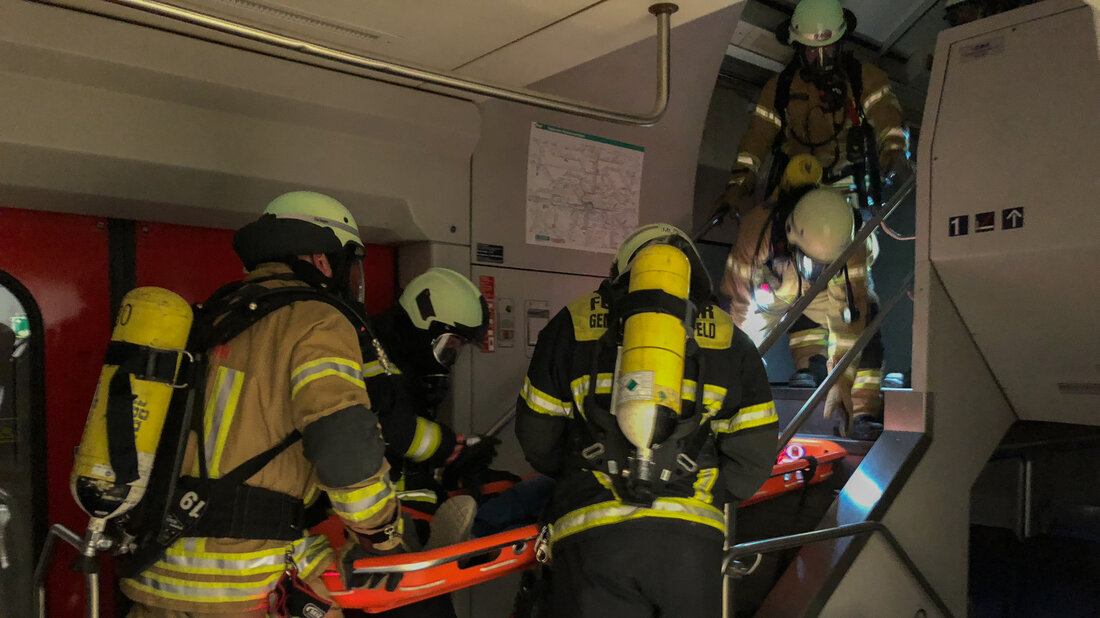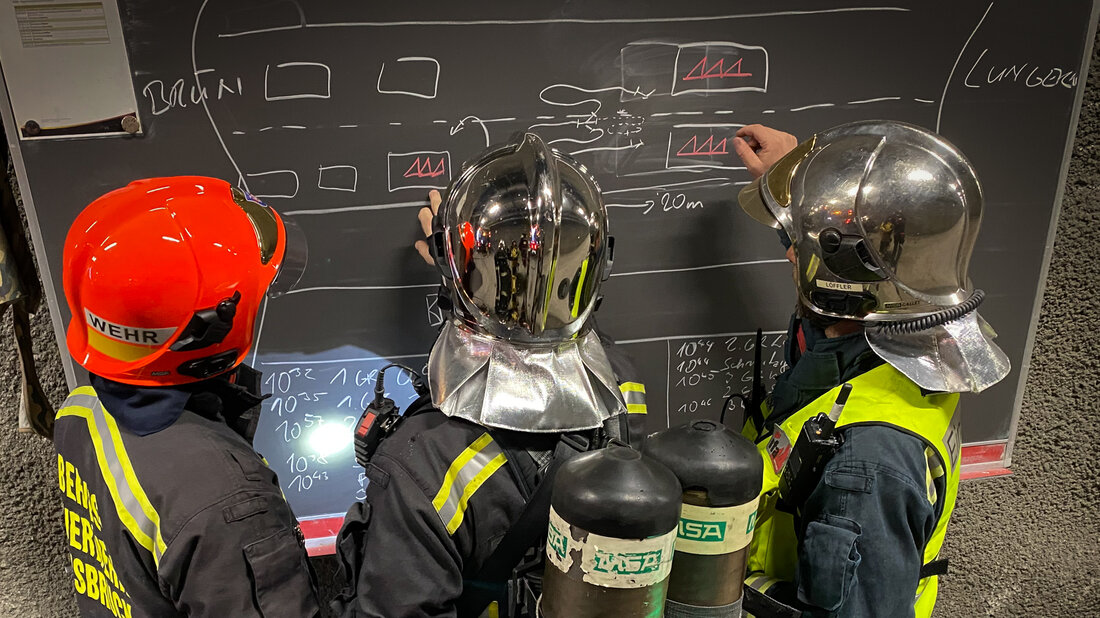In our courses, the tactical principle of «extinguish in order to rescue» is repeatedly questioned. We, therefore, explain the background to this principle in this magazine article. In particular, we would like to point out that «extinguish in order to rescue» does not mean that the fire should be extinguished first and thereafter start with rescuing. Although fighting the fire is the top priority, as explained below, search & rescue should be started at the same time as firefighting if sufficient personnel resources are available.
The challenge: Extremely large fire compartments
Most buildings are structurally divided into fire compartments to delay the spread of fire and smoke. A tunnel tube, on the other hand, consists of a single fire compartment that can be many hundreds or thousands of metres long. Searching such large fire compartments in the smoke can take too long to find and rescue people in time. In addition, the deeper the firefighters have to penetrate into smoke-filled areas, the greater the risks for them.

Primary tactical objective: Stop smoke production
Due to the size of the fire compartment, the International Fire Academy recommends extinguishing the vehicle fire in a tunnel as quickly as possible to stop the production of smoke. It improves the conditions for both self-rescue and search & rescue. Rescue operations are accelerated, and the risks for the firefighters are reduced. In other words, extinguishing the fire is not the goal but a means to an end: finding and rescuing people more quickly.

«Extinguish in order to rescue» complies with regulations
Some course participants argue that the principle of «extinguish in order to rescue» contradicts regulations or service rules. In fact, this principle is in accordance with the regulations: The standing order in the Swiss regulations for incident command specifies: 1. secure, 2. rescue. 3. hold, 4. protect, 5. overcome. The sub-task of securing is again based on the principle that the safety of the emergency personnel always comes first and that people and animals must be secured first. This prioritisation is exactly what the approach «extinguish in order to rescue» achieves for firefighting operations in tunnels.

Also in line with German and Austrian regulations
Section 3.2.2.1 of the German fire service regulations contains the following passage on prioritisation: «Rescuing, bringing to safety and protecting people is the primary operational objective in all decisions. In many cases, however, rescue is only possible if previously existing hazards are eliminated or at least limited.»
The information sheet for tunnel fires from the Austrian Federal Fire Association states: «The extinguishing operation creates the conditions for a safe/secure procedure for the emergency personnel and for rescuing others. In addition, the rapid fire attack limits the spread of the incident and minimises damage to installations and buildings.»

Best to fight the fire and search & rescue in parallel
The «extinguish in order to rescue» approach is also referred to as «priority firefighting» by the International Fire Academy. This should make it clear that extinguishing and search & rescue should ideally take place at the same time. However, if, for example, there are too few firefighters available for all measures in the initial phase, then firefighting should take priority, also to safeguard your own personnel.

Recommendation for on-site training
For on-site training, the International Fire Academy recommends that the principle of «extinguish in order to rescue» be explained in detail to all firefighters who are to be deployed to tunnel operations and that its application be practised with the officers. For example, the Fire incident report Bürgerwald Tunnel shows that this approach also proves its worth in practice.






